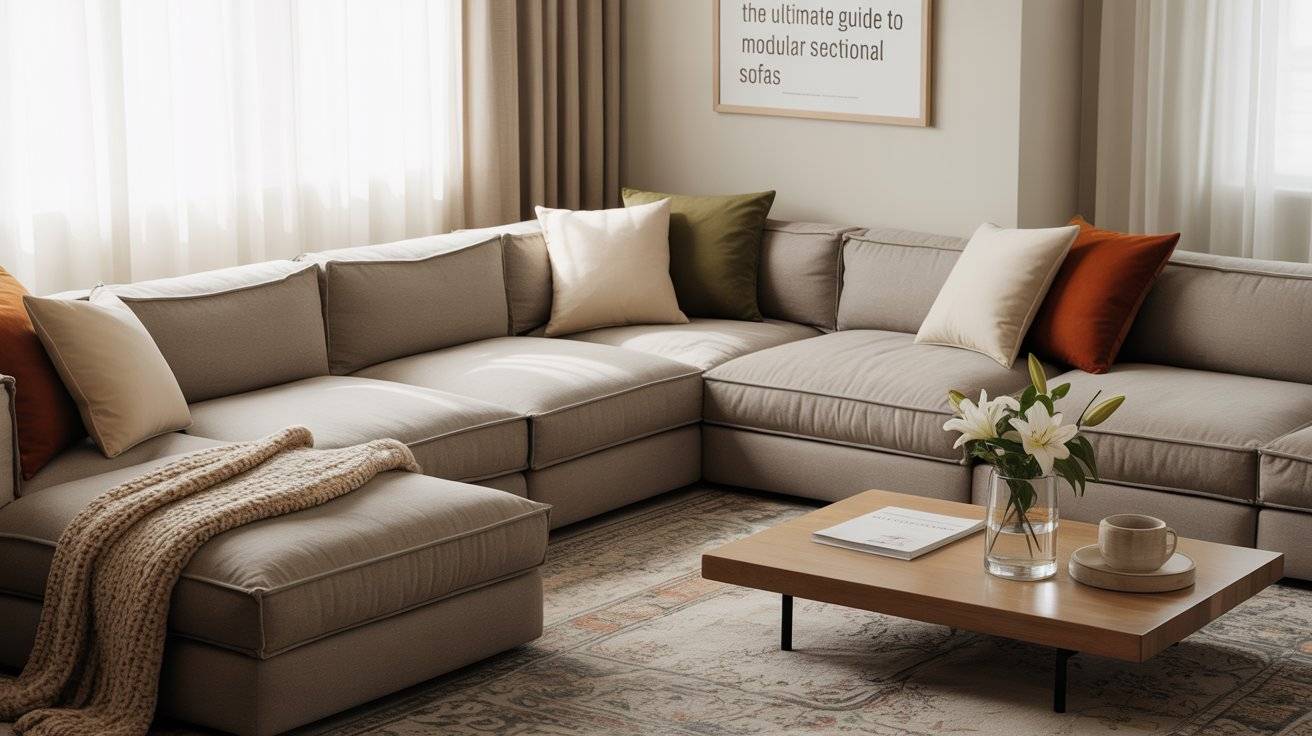After a long day, you walk into your living room and realize the setup isn’t hitting the mood anymore. Maybe the straight line of your sofa feels too rigid, or you’d love a cozy corner for curling up with a blanket.
With a modular sectional, you don’t need to buy new furniture you just move the pieces. In a few minutes, you can switch from a neat L-shape to a snug U-shape for movie night.
That’s the real strength of modular sectionals. They’re built for homes that change, whether it’s making room for kids’ playtime, hosting a group of friends, or simply refreshing the space without spending extra.
This guide walks you through what modular sectionals are, their benefits, how to pick one, and how to style and maintain it so it works for years.
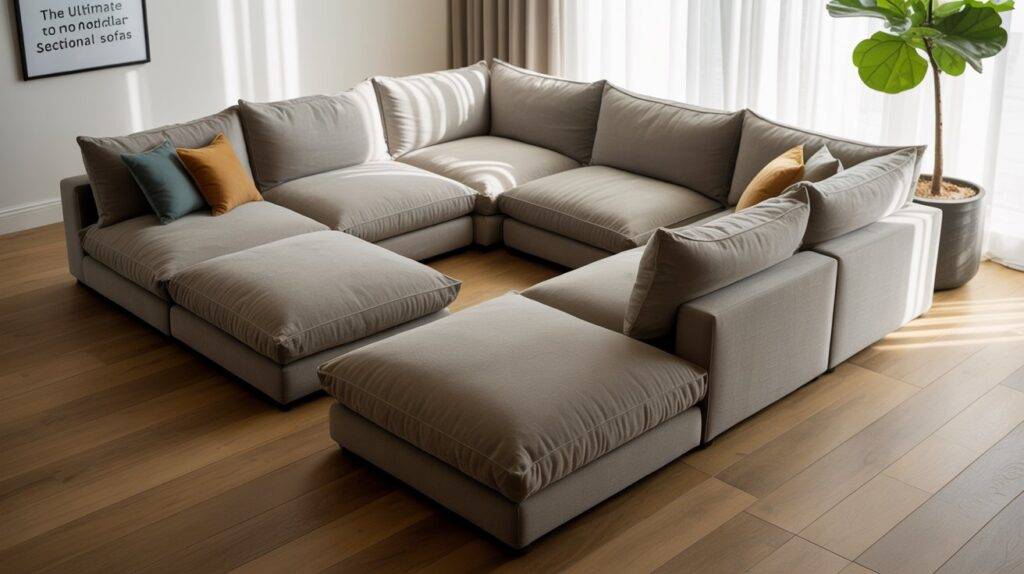
What Are Modular Sectional Sofas?
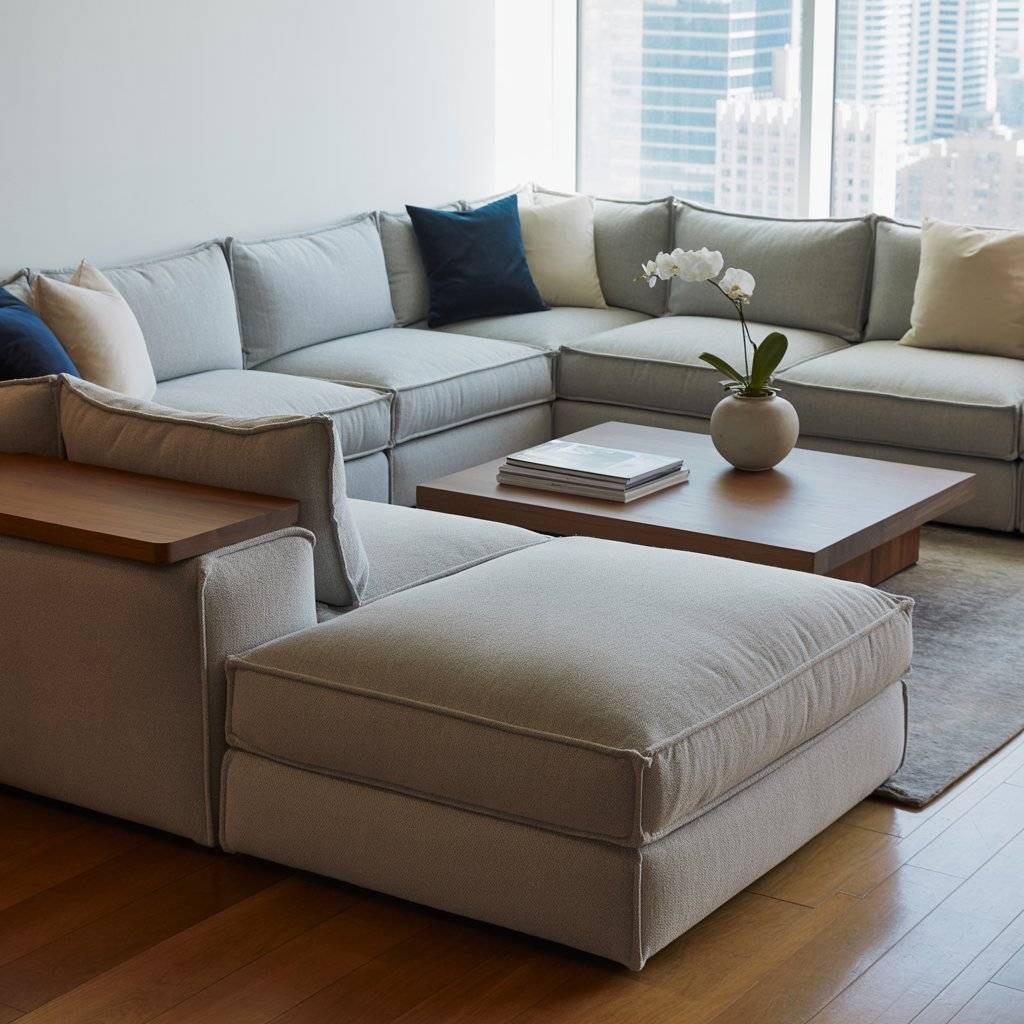
A modular sectional sofa is a couch made up of separate pieces, or “modules,” that you can arrange in different ways. Unlike a fixed sofa, which stays in one shape forever, modular sectionals can grow, shrink, or shift to fit your needs.
They started out as simple blocks of seating but have evolved into designs with chaises, ottomans, and storage options. Whether you live in a small apartment or a big family home, a modular sofa adapts to both. Think of it as furniture that moves with your life, not against it.
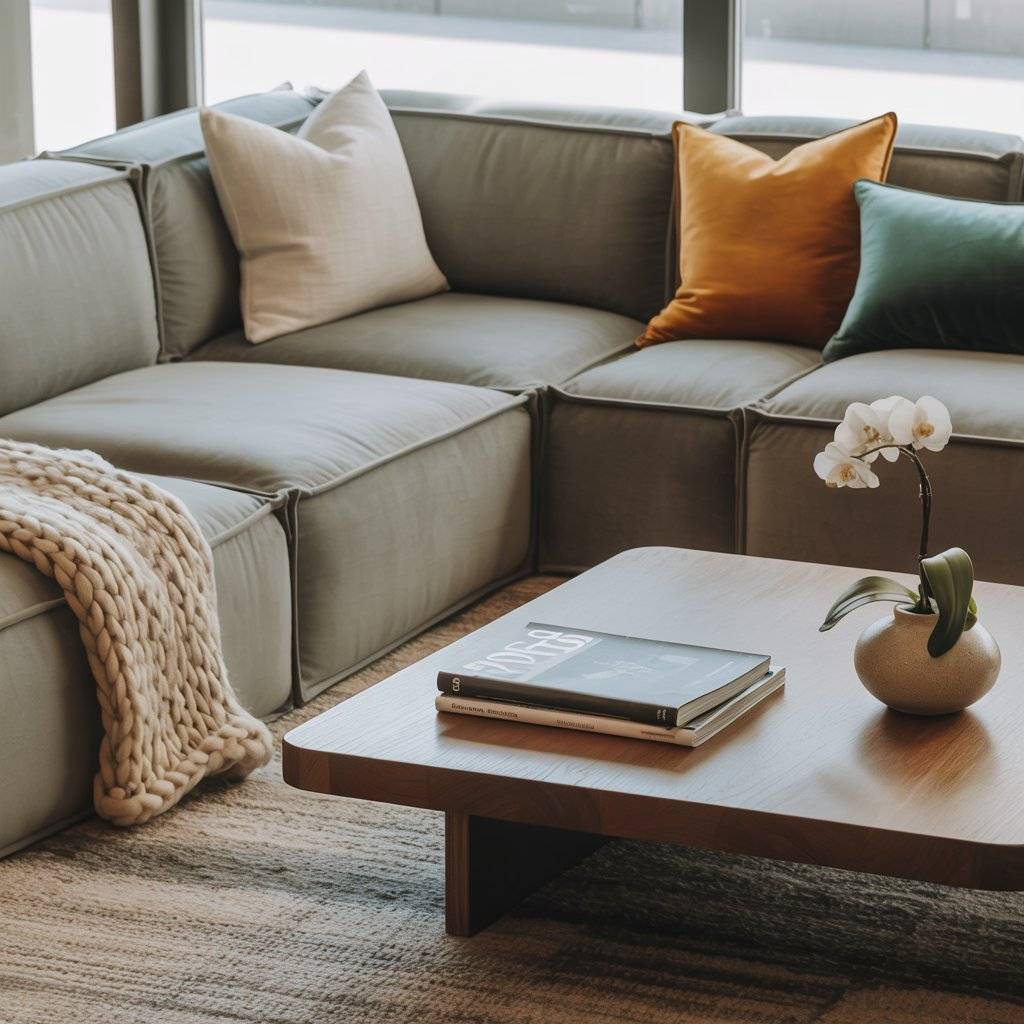
The Core Design and Components
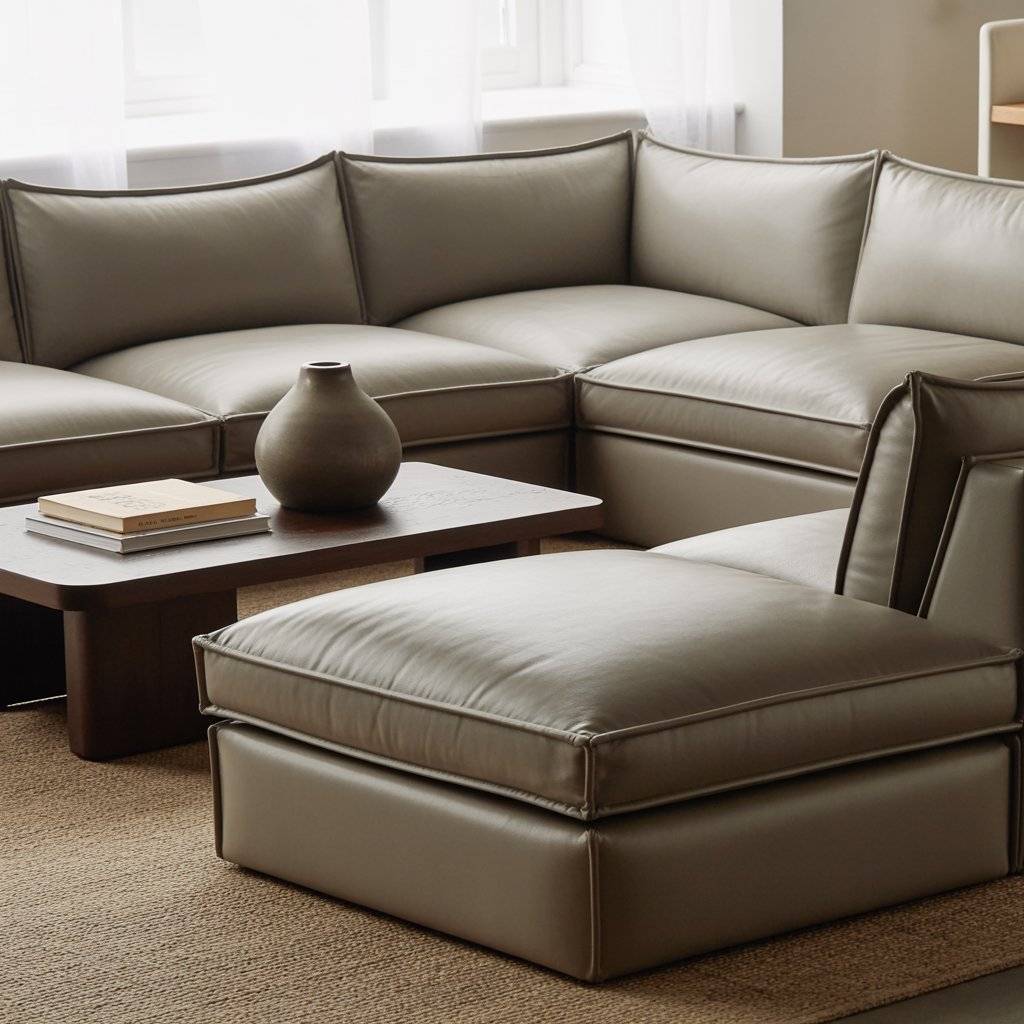
Every modular sectional is made up of individual sections like seats, arms, and chaises. These pieces attach with clips, hooks, or even magnets to hold them firmly in place. You can rearrange them into whatever layout makes the most sense for your room.
The frames are usually built with kiln-dried wood for durability and upholstered in fabrics like polyester, microfiber, or leather. Some even have removable covers you can wash. Ottomans often double as footrests or storage, making them practical in small spaces.
Pro tip: before you buy, measure your room and doorways. Nothing’s worse than finding the perfect sofa and realizing it doesn’t fit through your entryway.
You can check which one you can buy: Modular Sectional Sofas and Karl Springer Lucite Coffee Tables for an Organized Home
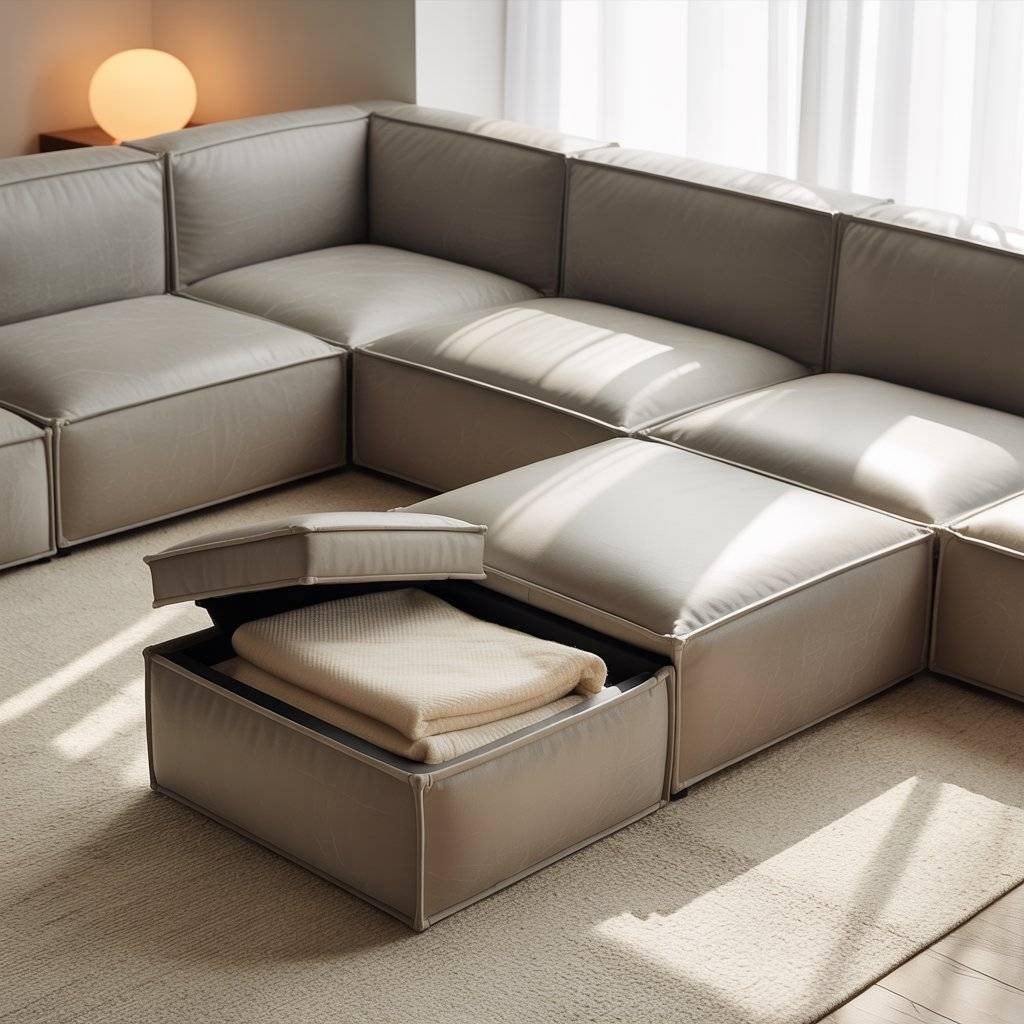
How Modular Sofas Differ from Traditional Sectionals
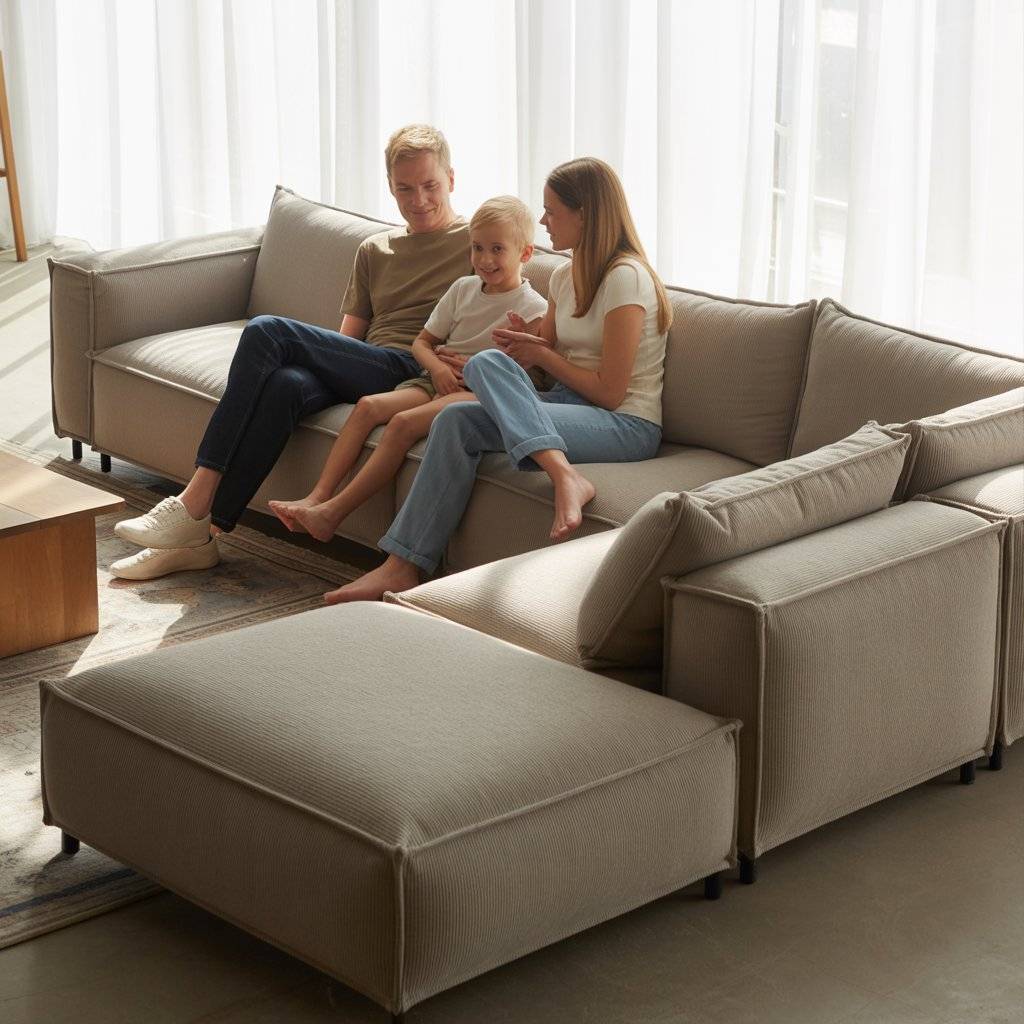
Traditional sectionals are built in one piece. You choose the layout L-shape, U-shape, or curved and that’s what you’re stuck with. Modular sectionals give you flexibility. You can rearrange the setup as often as you need without replacing the entire sofa.
This adaptability also makes them more practical for tight or changing spaces. If you move often, you can take them apart easily. If your family grows, you can add more modules instead of buying a new sofa. It’s a setup that scales with your lifestyle, not just your floor plan.
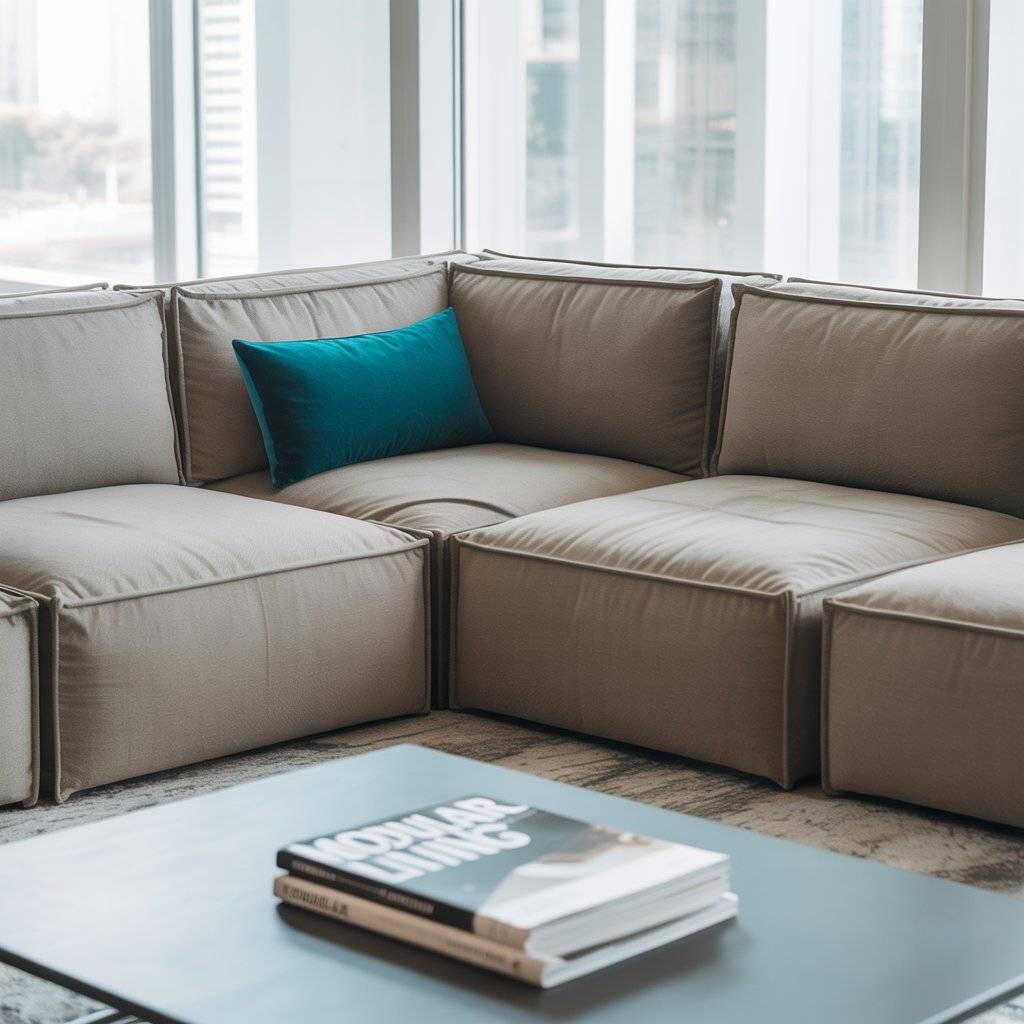
A Quick Look at History
Modular furniture first became popular in the 1950s when mid-century designers wanted homes to be more adaptable. Families needed furniture that could shift as life changed, and modular pieces made sense.
Over the decades, design and technology improved. Connectors got stronger, fabrics more durable, and eco-friendly materials more common. Many brands now use recycled fabrics and offer replaceable parts, so you can repair instead of replacing the whole thing.
Benefits of Choosing Modular Sectional Sofas
1. Versatility for Changing Needs
A modular sofa adapts as your life shifts. You can go from an L-shape to a U-shape in minutes, or separate the modules for a more open look. Hosting guests? Add an ottoman. Need more floor space for kids? Pull sections apart. It’s a sofa that fits your rhythm.
2. Comfort You Can Customize
These sofas are designed with comfort in mind. Deep seats, plush cushions, and adjustable backs let you choose how you sit. You can also customize fabrics, firmness, and colors to match your style. In open floor plans, modulars even work as subtle room dividers.
3. Durability and Space-Saving Design
Most modulars are built with solid frames and reversible cushions, meaning they’ll last for years. They’re also easier to move and clean around since you can take them apart. In small spaces, tucking in extra modules or using storage ottomans makes a huge difference.
How to Choose the Right Modular Sectional Sofa
Assess Your Space and Lifestyle
Measure your room carefully length, width, and doorway sizes matter. Think about how you’ll actually use the sofa. Movie lovers might want a chaise lounge, while families with kids might need stain-resistant fabrics.
Key Features to Look For
- Strong frames (hardwood over cheaper metals)
- Easy-clean upholstery like microfiber or leather
- Removable or washable covers for low-maintenance care
- Sturdy connectors so pieces don’t slide apart
- Extras like hidden storage, cup holders, or USB charging ports
Budget Considerations
Prices range widely from about $1,000 for a starter setup to $5,000+ for luxury designs. If budget matters, shop sales or look at modular-friendly brands like IKEA. If you want long-term investment, look at higher-end options like Room & Board or West Elm.
Styling and Arranging Modular Sofas
Popular Layouts
- Straight line: Works well in apartments.
- L-shape: Perfect for corners or smaller family rooms.
- U-shape: Great for big families and open conversations.
- Curved or S-shape: Adds flow in open-plan homes.
Decor Tips
Add throw blankets and pillows to bring texture. Use a rug large enough to anchor the sofa and balance the space. Plants and side tables help tie the look together.
Mistakes to Avoid
Don’t push the sofa against the wall in every setup it can make the room feel smaller. Avoid cramming too many pieces into tight spaces. And always think about natural light when choosing colors.
Caring for Your Modular Sectional
Daily Upkeep
Vacuum crumbs and dust weekly. Spot clean spills right away. Rotate and fluff cushions regularly to keep their shape.
Repairs and Replacements
Tighten connectors now and then. Replace covers or modules as needed instead of tossing the whole sofa. If a frame cracks, check if the warranty covers it.
Eco-Friendly Care
Look for sofas made from recycled fabrics and responsibly sourced wood. Wash covers with gentle soaps, and consider donating or repurposing old modules instead of discarding them.
Final Thoughts
Modular sectional sofas aren’t just about seating they’re about flexibility. They let you shape your living room around your lifestyle instead of forcing you to adapt to a rigid setup. From comfort to durability, they offer real value that grows with you.
The key takeaways? Measure carefully, choose quality frames and fabrics, and style with intention. Care for your sofa, and it will last for years.
If you’ve been thinking about refreshing your living room, a modular sectional might be the smartest investment you can make. It’s one sofa that adapts as you do.
Related post: How a Modular Sectional Sofa Creates a Stylish, Organized Home
- Natural Wood Tables: Rustic & Eco-Friendly Furniture - December 8, 2025
- Enchanting Christmas Garden Designs for a Cozy, Festive Backyard - November 29, 2025
- 35 Best Open Layout Living Room Dining Room Designs - November 29, 2025

